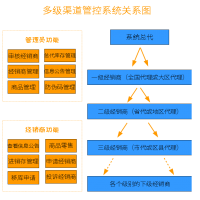
在當今全球化的商業環境下,進銷存軟件的選擇日益多樣化,然而國際版進銷存軟件卻存在著諸多不容忽視的問題與缺點。
其一,語言使用方面存在局限。許多國際版進銷存軟件的功能模塊呈現為英文版,這對于一些平均文化水平大專不到的鄉鎮企業等國內用戶而言,使用起來極為不便。畢竟在國內市場,同類軟件競品眾多,完全可以選擇更契合自身語言習慣和文化背景的產品。
其二,價格高昂也是一大硬傷。相較于國內的同類軟件,國際版進銷存軟件往往價格死貴。當然,如果使用者不在乎價格,或者堅信高價就等同于高品質,那另當別論,但對于大多數注重性價比的企業來說,這確實是個需要考量的關鍵因素。
其三,公有云和私有云的混淆是普遍存在的問題。這并非只是諸如 SAP 和 Salesforce 這類重量級系統的個例,幾乎所有的 ERP 系統都深陷于此。這種混淆容易導致企業在選擇和使用時產生迷茫,影響系統部署和后續運營。
其四,性價比堪憂。原本幾萬元就能搞定的進銷存業務,若采用國際版軟件,可能會被包裝成幾百萬元的 ERP 基礎工程,打著數字化轉型的旗號,可這樣的投入究竟值不值得,值得企業深思。
最后,本地化與國際化難以平衡且存在數據安全隱患。一方面,本地化的功能定制需求與國際化的期望往往背道而馳;另一方面,隨著信息安全管理逐漸成熟,國際版軟件與海外公有云之間那說不清道不明的聯系,很可能為境外數據泄露大開方便之門,給企業帶來潛在風險。
總之,企業在考慮選用國際版進銷存軟件時,需要全面權衡這些問題與缺點,謹慎做出決策。
相關閱讀:
延譽小工單軟件產品介紹和使用幫助
會員管理軟件使用手冊:商城系統 SaaS云 進銷存軟件
多級渠道管控/經銷商管理系統
Analysis of the Problems and Disadvantages of International Inventory Management Software
In today’s global business environment, the choices of inventory management software are increasingly diverse. However, international inventory management software has many problems and disadvantages that cannot be ignored.
Firstly, there are limitations in language usage. Many functional modules of international inventory management software are in English, which is extremely inconvenient for domestic users such as township enterprises whose average educational level is below junior college. After all, in the domestic market, there are numerous competing products of the same kind, and it is entirely possible to choose products that are more in line with their own language habits and cultural backgrounds.
Secondly, the high price is also a major drawback. Compared with domestic similar software, international inventory management software is often prohibitively expensive. Of course, if users don’t care about the price or firmly believe that a high price equals high quality, that’s another story. But for most enterprises that value cost performance, this is indeed a key factor that needs to be considered.
Thirdly, the confusion between public cloud and private cloud is a common problem. This is not just an isolated case for heavyweight systems like SAP and Salesforce, but almost all ERP systems are trapped in this dilemma. This confusion can easily lead to confusion for enterprises when choosing and using the software, affecting system deployment and subsequent operations.
Fourthly, the cost performance is worrying. What could originally be accomplished with tens of thousands of yuan for inventory management may be packaged into an ERP infrastructure project worth millions of yuan under the guise of digital transformation. But whether such an investment is worthwhile is something that enterprises need to think deeply about.
Finally, it is difficult to balance localization and internationalization, and there are also data security risks. On the one hand, the demand for local function customization often runs counter to international expectations. On the other hand, as information security management gradually matures, the ambiguous connection between international software and overseas public clouds may open the door wide for overseas data leakage, bringing potential risks to enterprises.
In conclusion, when considering choosing international inventory management software, enterprises need to comprehensively weigh these problems and disadvantages and make decisions cautiously.








